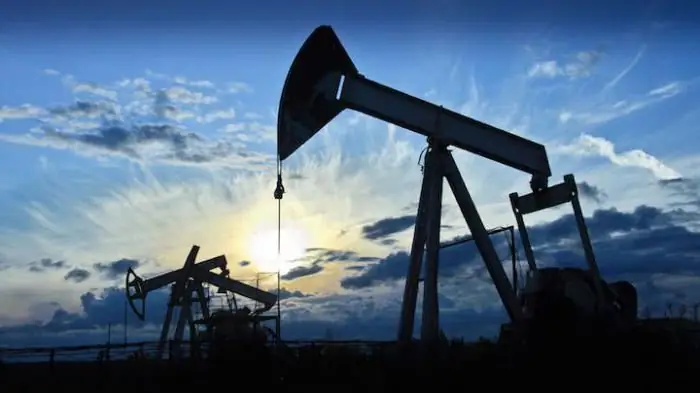2025 Author: Howard Calhoun | [email protected]. Last modified: 2025-01-24 13:10:31
The liquefaction of natural gas is called its conversion into a liquid state under the action of temperatures that are lower than the critical one. This process makes it possible to reserve and save it for later use, as well as for organizing transportation by any mode of transport. The substance is often used as an alternative fuel in motor vehicles, metal processing, mobile power plants, and so on. Among other things, in many private houses you can find a liquefied gas boiler. The cost of creating installations for its production depends on the location of the development, as well as the type and composition of the extracted raw materials. Now the most promising of them are considered to be floating ones, since transportation through the construction of underwater gas pipelines is often unrealistic.

Preparation and start of liquefaction
Technological schemes of those plants that are used for liquefaction differ from one another, first of all, in the refrigeration cycle. Its choice is primarily influenced by the composition and pressure of the gas,who comes here. These parameters, in turn, are influenced by several factors, including: time of year, place of extraction, and even the term of its development. Before you begin to liquefy gases and send them to the installation, you need to clean them from acidic impurities and dry them. At the starting phase of the process, hydrocarbons are massively separated from the feedstock, including high-boiling naphthenic, aromatic and paraffinic hydrocarbons. Otherwise, clogging of the fittings and equipment of the installations may occur. In order to efficiently and efficiently liquefy gases, it must be remembered that a large amount of heavy hydrocarbons in their composition leads to a high liquefaction temperature and low energy costs. If nitrogen is present in their composition, then this leads to an increase in volatility and energy consumption.

Cascade method and refrigeration cycles
Industrial liquefaction methods are based on the principle of liquid evaporation, the process of adiabatic gas expansion, and the Joule-Thomson effect. Liquefied natural gas is generated by using several refrigeration units (hence the media). In this case, the medium, which is characterized by a lower boiling point, condenses under pressure due to the evaporation of a higher boiling neighboring one. This method is the most common and is known as cascade liquefaction. In most cases, propane (sometimes ammonia) acts as a refrigerant in the first stage, and ethylene in the second. Thus, the liquefaction of natural gas is carried out in this case under the influence of evaporated ethylene. WhatAs far as refrigeration cycles are based on the Joule-Thomson effect mentioned above, among them there are both single and double throttling, as well as pre-cooling due to a special flow and a foreign agent.

Large plant liquefaction
You can also liquefy gases by using a single-threaded cascade cycle. Here, the refrigerant is a multicomponent mixture, which includes nitrogen with hydrocarbons. This method, together with its modifications, is most often used in large installations, the productivity of which is from two to five million cubic meters of the finished product per day. Liquefying gases in this way is beneficial in terms of relatively low energy costs. On the other hand, a single-thread cascade cycle needs a lot of metal-intensive equipment.
Recommended:
Combustible gases: names, properties and applications

Combustible gases - hydrocarbons formed in the earth's crust as a result of thermal decomposition of organic residues. They are highly economical energy fuels
Main types of gases

Nature knows three main states: solid, liquid and gaseous. Almost any liquid can acquire each of the remaining two. Many solids, when melted and evaporated or burned, can replenish the content of the air. But not every gas can become a component of solid materials or liquids. Different types of gases are known, which differ from each other in properties, origin and application features
Current, preliminary and final control: why and how is it carried out

Efficiency of management is determined by the achievement of the goal, at all stages of movement towards the result, the manager must exercise control and supervision over the process, resources, environment. Control is one of the most important functional purposes of a leader
Why does the ruble depend on oil and not on gas or gold? Why does the ruble exchange rate depend on the price of oil, but the dollar exchange rate does not?

Many in our country are wondering why the ruble depends on oil. Why is it that if the price of black gold decreases, the price of imported goods rises, is it more difficult to get out to rest abroad? At the same time, the national currency becomes less valuable, and with it, all savings
The dollar and the euro are showing strong growth. Why is the euro and dollar rising in 2014?

To understand why the euro and the dollar are growing, and the Russian ruble is falling, you should analyze the political and economic situation in the world

